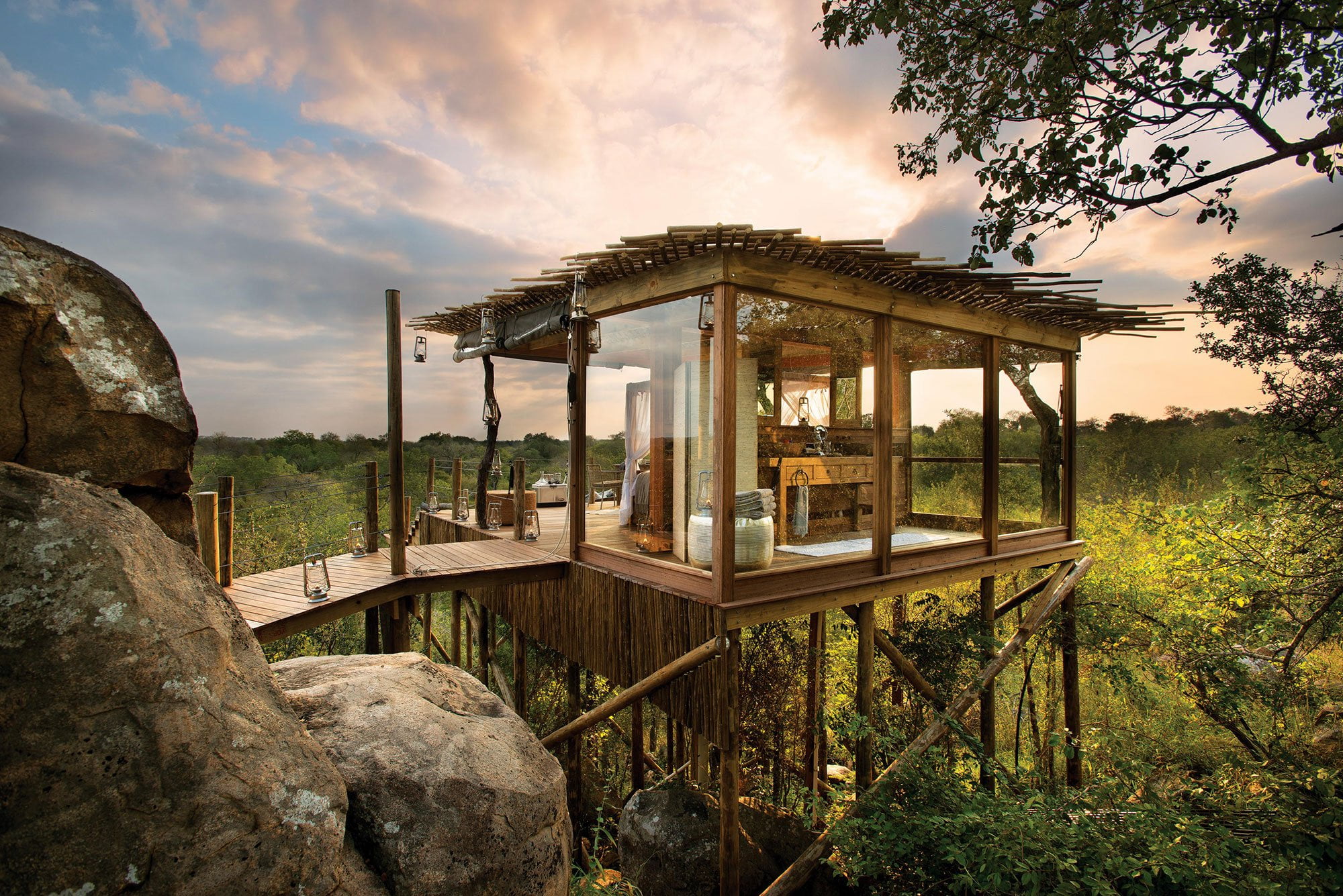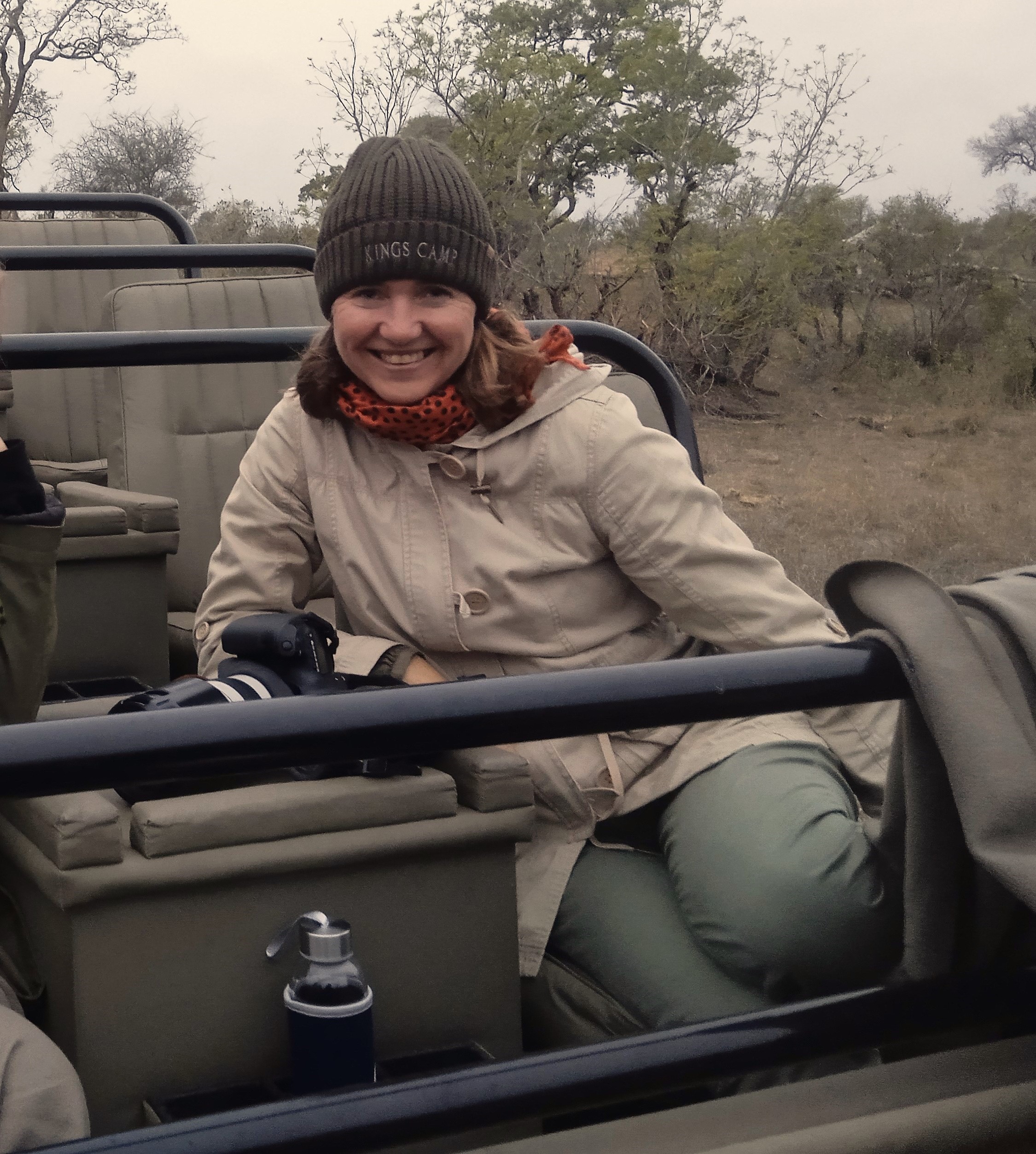IS THE KRUGER WORTH IT?
We are often asked if Kruger is ‘worth it’. Our unequivocal answer is: YES.
Although compared to other conservation areas, Kruger is small and not very remote, it packs a huge punch when it comes to biodiversity and the density of game. Nowhere else in the world do you have a better chance of seeing all of the Big 5 – often in a single game drive.

What’s covered in this guide
Explore the highlights of this post with ease by using the table of contents below to navigate to sections of interest.
What makes up ‘Kruger’?
‘Kruger’ is a quick and easy name for a vast conservation area in South Africa that is anchored by the Kruger National Park. Surrounding the national park are a series of private reserves that are collectively called ‘Greater Kruger’.
The national park is bigger than all the private reserves put together and borders Mozambique and Zimbabwe.
Read more about a Greater Kruger safari here.
What is Kruger good for?
The whole area is a prime safari destination for many reasons:
- Rhinos
The biggest population of wild rhino is found in Kruger. Intense protection keeps them safe from poachers, meaning safari lovers can enjoy regular sightings. This is only possible in very few other places in the world.
- Big 5 stronghold
Because of the sheer number of rhino, Kruger is arguably the best place on earth to see all of the Big 5. Lion, leopard, elephant and buffalo are all very populous here.
- Kids
Kruger is fantastic for children because many of the lodges have specialist programmes and activities, plus game drives are generally exciting because of the density of wildlife.
See more about family safaris here.
- First-timers
If you’ve never been on safari before, Kruger is the perfect place to start. Lodges, roads, Wi-Fi, logistics and so on are exceptional. English is widespread and you will feel both pampered and invigorated.
- Infrastructure
If you require medical support, Kruger can’t be beaten. Not only are the high-tech private hospitals of Cape Town and Johannesburg short flights away but lodges have reliable communication systems and power supplies (should you need a c-pap machine, for example).
- Food and wine
If dining is important to you, Greater Kruger’s lodges have among the best safari cuisine and many have significant wine cellars. Thanks to being in South Africa, chefs have easy access to quality produce and more unusual ingredients.

The Kingston Treehouse at Ivory Lodge is just one of many stunning sleepouts.
- Other activities
While game drives, birding, nature walks and sundowners are the heart of every safari, Greater Kruger goes further. Depending on your lodge, you could have access to art galleries, photographic studios for editing your images, interactive kitchens, full spas, yoga pavilions, tennis courts and more. You could even help to notch a rhino horn, a truly humbling experience.
- Extravagant lodges
While décor is a matter of taste, Greater Kruger does have architectural masterpieces that are built into cliffs or overlook rivers. One is built into the earth so that elephants can walk on the roof; some have antiques and high-end pieces. Of course, there are simpler lodges where a more pared-back approach shines.
- Beyond Kruger
In the area surrounding the reserves you can find championship golf courses, excellent restaurants and plenty of historical and natural sites that are worth exploring such as the Blyde River Canyon, Rorke’s Drift Potholes, the God’s Window lookout and many more. This allows you to expand your Kruger safari to take in South Africa’s culture and history along the stunning Panorama Route.
- Varied terrain
Southern Kruger is generally dense thicket, perfect for leopard. This changes gradually as you head north, opening up into more classic savannah, ideal for cheetah. This means you could have two very different experiences by staying at two different lodges.
Key factors to consider for a Kruger safari
If you’re keen on planning a trip to Greater Kruger, please consider:
- Open vehicles
Almost all game-drive vehicles are completely open ie no windows and no roofs. This is phenomenal for really getting a full sense of the landscape (vehicles in Botswana usually have roofs and those in Kenya and Tanzania often have windows and roofs). Be sure to pack sunhats, high SPF sunscreen and UV polarised sunglasses. Roofs are available in green season when rain is more likely.

A classic Kruger scene with an impressive lion, open vehicle and tracker.
- Off-roading
Going off road is only allowed in the private reserves of Greater Kruger, not in the national park (unless you are in a private concession within the park, such as Singita).
- Night drives
Night drives are also only legally allowed in private reserves (in national parks, it helps rangers identify poachers and wildlife traffickers if they know there should be no car lights at all).
- Malaria
While Greater Kruger is in a sub-tropical zone and is considered a year-round malaria area because of summer rain, the risk in lodges and camps is very low. Malaria can only be contracted by via the bite of a specific female mosquito that has bitten an ill person. This is not likely in the reserves unless you intend to spend a lot of time in rural or remote villages. Please talk to your doctor or travel clinic.
- Self-drivers
Self-drivers are only permitted in the national park. You can, of course, drive yourself to a private reserve but you will have to park your vehicle and be collected by staff or your guide (you cannot drive yourself around the reserves). We suggest flying in from Johannesburg or allowing us to arrange an air-conditioned transfer vehicle with a professional driver so you start your vacation the moment you leave OR Tambo International Airport or hotel.
- Traversing rights
Individual private reserves are fairly small by African safari standards. Work with your agent to use reserves that have traversing rights (ie you can cross into another reserve) or are on the border with the national park (everyone has a right to enter the park). If this way you will have more land to cover and not be limited to a smaller zone. The animals can move freely as they please so all reserves could offer opportunities to see the Big 5 and other highlights like cheetah and wild dog.
If traversing rights are extremely limited, you could move to another reserve after two or three nights.
- Limits at sightings
In the reserves, guides generally work together to have only three or so vehicles at each sighting especially of big cats. This is so that the animals don’t feel stressed or hemmed in should they need to escape. This is not the case in the national park where there is no limit to how many self-drivers can enjoy a sighting.
- Trackers
Almost all the lodges and camps use a guide and tracker system. The tracker is indispensable for finding spoor in the sand, listening out for calls and identifying game in sometimes thick foliage. Very few other safari countries have a team like this and we suggest clients built the tracker into their tipping budget.
PHOTO CREDITS Londolozi, Savanna Private Game Reserve and More Family Collection








